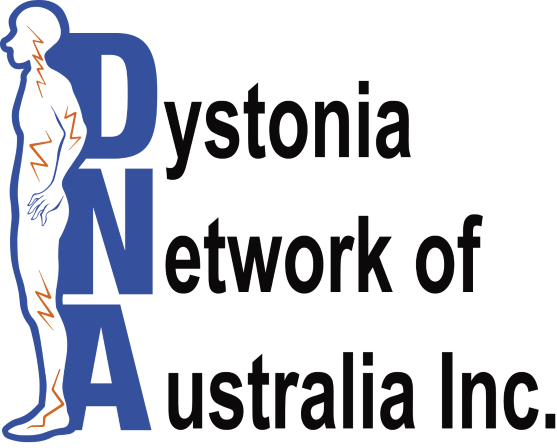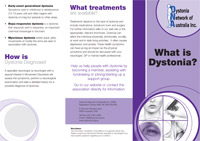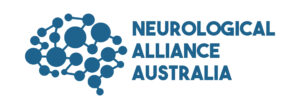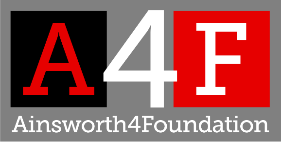What is Dystonia?
Dystonia is a neurological movement disorder that makes it difficult for people to control their muscles. It can cause abnormal twisting or positions in part(s) of the body along with spasms or tremors. In some people the postures may be fixed or locked in position and in others they can occur from time to time. In some types of dystonia pain can be the main symptom. Dystonia can affect almost any part of the body. Dystonia affects children and adults of any age and has many different causes. In some people symptoms may improve or even disappear. However, the symptoms may return after a period of time. There is no known cure but there are treatments that help with the symptoms. There are many forms of dystonia and many conditions or diseases may include dystonia as part of the symptoms. Read about dystonia symptoms & diagnosis.
What causes dystonia?
Dystonia has many causes. It may be genetic as in early-onset generalised dystonia, dopa-responsive dystonia and myoclonus dystonia. It can also be acquired (where there is a known cause), from a brain injury as in hemidystonia or cerebral palsy, from certain medications that affect the brain or as a result of stroke or trauma. However, often the cause of dystonia is not known (this is called idiopathic dystonia). Where a cause is not found it is usually accepted that there is a problem with the way certain areas of the brain, such as the basal ganglia and the cerebellum, control movement. Read more about causes/genetic disorders.
Common types of dystonia
Dystonia can be described as focal, where only one area of the body is affected, segmental, two or more connected areas are affected, hemidystonia, one side of the body only is affected, multifocal where two or more unconnected body regions are affected and generalised, where most or all of the body is affected. Focal dystonias can occur at any age but mostly occur in adults. They include:
- cervical dystonia – dystonia of the neck causing painful spasms, postures or positions
- blepharospasm – dystonia of the eyelids causing the eyes to blink or close often
- spasmodic dysphonia – dystonia of the larynx or voice box leading to strained, whispering or shaky speech
- writer’s or musician’s cramp – causing difficulty with writing or playing a musical instrument
- generalised dystonia – where the trunk and at least two other parts of the body are involved
- oromandibular dystonia – dystonia of the face, jaw, mouth and tongue with difficulty in opening or closing the mouth affecting chewing and speech and causing movements the person cannot control
Segmental dystonias include Meige’s syndrome which is mostly a mix of two forms of dystonia, blepharospasm and oromandibular dystonia, that could also involve the voice, or combinations such as writer’s cramp and cervical dystonia. Hemidystonia affects one side of the body. This type of dystonia is usually caused by some type of injury to the brain. Multifocal dystonia is not common, where unconnected areas in the body are affected, for example, spasmodic dysphonia may be seen with writer’s cramp. Generalised dystonia is the least common form of dystonia but the most disabling and occurs mostly in children and adolescents (13-19 year olds). In this type of dystonia the trunk (central or main part of the body) is involved and two or more other areas of the body. The following types of generalised dystonia are the most common. Please refer to our website for more information.
- Early-onset generalised dystonia. Symptoms start in childhood or adolescence (13-19 years old) and often begin with dystonia of a leg but spread to other areas.
- Dopa-responsive dystonia is a dystonia that responds well to dopamine, an important chemical messenger in the brain.
- Myoclonus dystonia where quick, jerky movements of mostly the arms are seen in association with dystonia.
How prevalent is Dystonia?
It is not clear how many people in Australia have dystonia. However a review of studies conducted overseas indicates that the incidence of primary dystonia (idiopathic or inherited forms of dystonia) could range from 16.43 to 30.85 per 100,000 people (see study here). Therefore, there could be between 4,200 to 8,000 people with primary dystonia in Australia. (Note that this does not include people with acquired or secondary dystonia).
How is dystonia diagnosed?
A specialist neurologist (a neurologist with a special interest in Movement Disorders) will assess the symptoms, perform a neurological examination and take a detailed history for a possible diagnosis of dystonia.
What treatments are available?
Treatments depend on the type of dystonia and include medications, botulinum toxin and surgery. For further information refer to treatment options. Dystonia can affect the individual physically, emotionally, socially, at work and in daily living activities. It often causes depression and anxiety. These health symptoms can have as big an impact as the physical symptoms and should be discussed with your neurologist, GP or mental health professional.
Go to our glossary and Frequently Asked Questions.
Find general information about dystonia in other languages.
Go to all our advisory board downloadable brochures.
What is Dystonia Download PDF
Disclaimer: The information contained on this page is of a general nature only. Please consult a Movement Disorder specialist or neurologist if you have specific questions regarding your condition.
Page updated 31 January 2024






